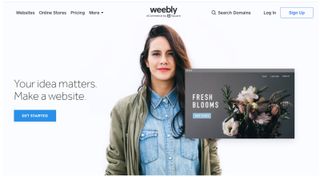A shorter version of this article first appeared in issue 234 of .net magazine – the world's best-selling magazine for web designers and developers.
.net: What difference can understanding “how people perceive and think” make to a website or application?
RS: You can compare it to browser rendering. Web designers know that if the site isn't built in the right way, the browser won’t render it as you intended on the screen. The same thing happens when we look at the screen ourselves. There is a process of perception that looks at the screen, notices or doesn't notice certain elements, makes judgements about what is there and determines what is possible. Whether or not the design 'renders' in the user’s head the way you intended depends on whether you built the design in accordance with how their head works. Just like the browser rendering depends on knowing how the browser works.
For example, you can use contrast in a design to make an element pop out in the user’s perception. That's design 101. Things like Gestalt principles. The art comes in when you apply this to user interface design. How do you guide people through a process on screen, use the right words to ring the right bells as they scan, and impress the functional possibilities into their intuition without asking them to think overtly?
In order to do all these things it’s not an academic understanding you need. It’s a reflective first-hand feeling for how your own eyes react to the screen and how the words play out in your own head as you skim the page. Try to become more sensitive to these experiences by being more aware of them. Then you can make more effective designs.
.net: What’s the best way for a team without a dedicated UX professional to make UX part of their process?
RS: I would start by taking the silver bullet flavour out of UX and break it into pieces. UX is a fancy name put onto practical things by consultants so they can charge for them. In practice there are three main points.
First, there is the matter of knowing what is common to all people. How the brain works, how the eyes scan, how people tick, what makes a screen understandable and so on. Principles of clarity apply regardless of what the domain is. Tufte’s principles for example apply here.
Second, you need to know what is special about your users. It’s not their brains or perception – that's the same in everybody. What makes your users different are their habits and the job they are trying to do. You need to understand their purpose for using your product, how they talk about it, their points of reference and so on. Technically this is called 'domain knowledge'. It's most useful to think about the jobs individual users are trying to do.
Lastly you need empathy, the ability to see these points from the user’s perspective. You have to see it through their eyes in order to make the right decisions. You can use friendship as an example. You usually know what your friends like or don't like. So try to become friends with your users. If that’s too hard, make friends with someone else in the same role.
This is important. A personal connection makes the difference between living intuition and static knowledge that sits in a document.
.net: Is it possible to measure user experience?
RS: You can't measure UX because it's a word for a bundle of design services. You can measure customer satisfaction and you can measure sales, and you can look at whether those improve after you invest in UX.
.net: How do you balance great user experience and the commercial goals of a application?
RS: There will always be problems when the buyer and the consumer of the product want different things. That's the core of it. When the buyer and user want the same things, there is no conflict.
.net: And finally, why did the previous version of Basecamp hide the search input in a separate tab, and why wasn’t this changed?
RS: Search wasn't important to us for a long time. The original version of Basecamp didn't have search. When we added it, we tried to squeeze a field into the header area. It felt too cramped. In order to solve the problem, we would have to put the entire layout of the application chrome into question. The desire for a visible search field wasn't strong enough to outweigh the cost of changing the whole layout, so we used a tab and it stayed like that until we redesigned Basecamp. As you can see, search is extremely prominent in the new Basecamp design. There is an open search field on every screen now.




